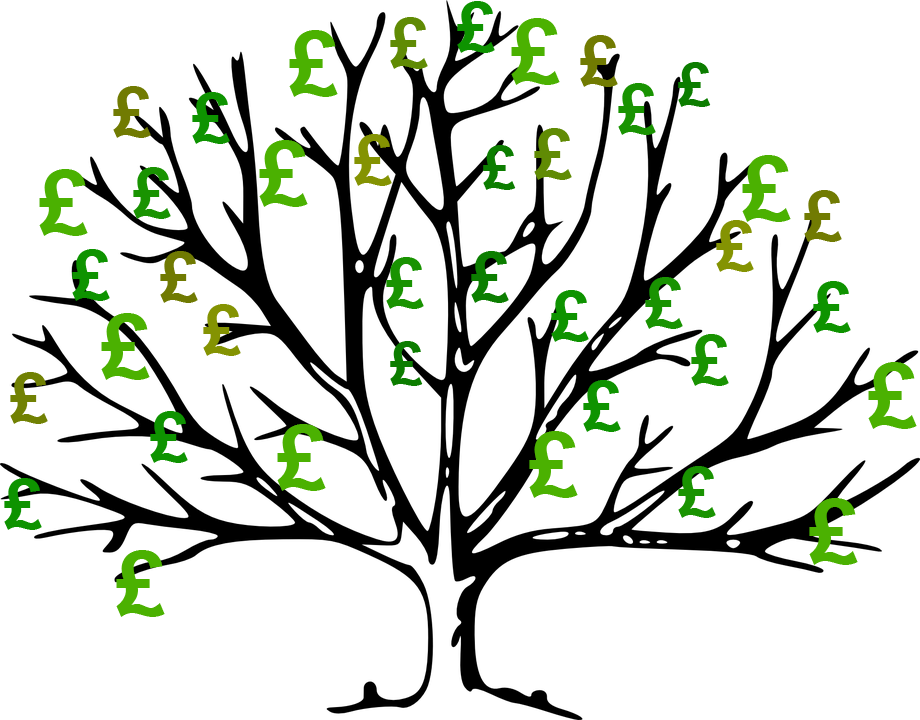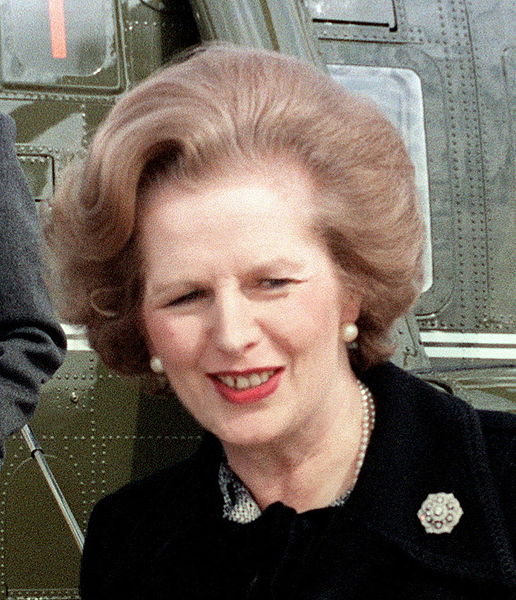 Is there a ‘magic money tree’? Is it desirable for central banks to create money to finance government deficits?
Is there a ‘magic money tree’? Is it desirable for central banks to create money to finance government deficits?
The standard thinking of conservative governments around the world is that creating money to finance deficits will be inflationary. Rather, governments should attempt to reduce deficits. This will reduce the problem of government expenditure crowding out private expenditure and reduce the burden placed on future generations of having to finance higher government debt.
If deficits rise because of government response to an emergency, such as supporting people and businesses during the Covid-19 pandemic, then, as soon as the problem begins to wane, governments should attempt to reduce the higher deficits by raising taxes or cutting government expenditure. This was the approach of many governments, including the Coalition and Conservative governments in the UK from 2010, as econommies began to recover from the 2007/8 financial crisis.
 ‘Modern Monetary Theory‘ challenges these arguments. Advocates of the theory support the use of higher deficits financed by monetary expansion if the money is spent on things that increase potential output as well as actual output. Examples include spending on R&D, education, infrastructure, health and housing.
‘Modern Monetary Theory‘ challenges these arguments. Advocates of the theory support the use of higher deficits financed by monetary expansion if the money is spent on things that increase potential output as well as actual output. Examples include spending on R&D, education, infrastructure, health and housing.
Modern monetary theorists still accept that excess demand will lead to inflation. Governments should therefore avoid excessive deficits and central banks should avoid creating excessive amounts of money. But, they argue that inflation caused by excess demand has not been a problem for many years in most countries. Instead, we have a problem of too little investment and too little spending generally. There is plenty of scope, they maintain, for expanding demand. This, if carefully directed, can lead to productivity growth and an expansion of aggregate supply to match the rise in aggregate demand.
Government deficits, they argue, are not intrinsically bad. Government debt is someone else’s assets, whether in the form of government bonds, savings certificates, Treasury bills or other instruments. Provided the debt can be serviced at low interest rates, there is no problem for the government and the spending it generates can be managed to allow economies to function at near full capacity.
The following videos and articles look at modern monetary theory and assess its relevance. Not surprisingly, they differ in their support of the theory!
Videos
Articles
- Modern monetary theory: the rise of economists who say huge government debt is not a problem
The Conversation, John Whittaker (7/7/20)
- Modern Monetary Theory: How MMT is challenging the economic establishment
ABC News, Gareth Hutchens (20/7/20)
- What is Modern Monetary Theory and is it THE answer?
Sydney Morning Herald, Jessica Irvine (2/7/20)
- MMT: what is modern monetary theory and will it work?
MoneyWeek, Stuart Watkins (14/7/20)
- MMT: the magic money tree bears fruit
MoneyWeek, Stuart Watkins (17/7/20)
- Modern Monetary Theory is no Magic Money Tree
Adam Smith Institute, Matt Kilcoyne (20/5/20)
- “Modern Monetary Theory” Goes Mainstream
Forbes, Nathan Lewis (10/7/20)
- How Boris Johnson’s Conservatives have become Magic Money Tree huggers
The Scotsman, Bill Jamieson (16/7/20)
- Ignore the impacts of debt-fuelled stimulus at your peril
Livewire, David Rosenbloom (14/7/20)
- Modern Monetary Theory, explained
Vox.com, Dylan Matthews (16/4/19)
Questions
- Compare traditional Keynesian economics and modern monetary theory.
- Using the equation of exchange, MV = PY, what would a modern monetary theorist say about the effect of an expansion of M on the other variables?
- What is the role of fiscal policy in modern monetary theory?
- What evidence might suggest that money supply has been unduly restricted?
- When, according to modern monetary theory, is a rising government deficit (a) not a problem; (b) a problem?
- Is there any truth in the saying, ‘There’s no such thing as a magic money tree’?
- Provide a critique of modern monetary theory.
 Project Syndicate is an organisation which produces articles on a range of economic, political and social topics written by eminent scholars, political and business leaders, policymakers and civic activists. It then makes these available to news media in more than 150 countries. Here we look at four such articles which assess the outlook for the European and global economies and even that of capitalism itself.
Project Syndicate is an organisation which produces articles on a range of economic, political and social topics written by eminent scholars, political and business leaders, policymakers and civic activists. It then makes these available to news media in more than 150 countries. Here we look at four such articles which assess the outlook for the European and global economies and even that of capitalism itself.
The general tone is one of pessimism. Despite unconventional monetary policies, such as quantitative easing (QE) and negative nominal interest rates, the global recovery is anaemic. As the Nouriel Roubini articles states:
Unconventional monetary policies – entrenched now for almost a decade – have themselves become conventional. And, in view of persistent lacklustre growth and deflation risk in most advanced economies, monetary policymakers will have to continue their lonely fight with a new set of ‘unconventional unconventional’ monetary policies.
Perhaps this will involve supplying additional money directly to consumers and/or business in a so-called ‘helicopter drop’ of money. Perhaps it will be supplying money directly to governments to finance infrastructure projects – a policy dubbed ‘people’s quantitative easing‘. Perhaps it will involve taxing the holding of cash by banks to encourage them to lend.
 The Hans-Werner Sinn article looks at some of the consequences of the huge amount of money created through QE and continuing to be created in the eurozone. Although it has not boosted consumption and investment nearly as much as desired, it has caused bubbles in various asset markets. For example, the property market has soared in many countries:
The Hans-Werner Sinn article looks at some of the consequences of the huge amount of money created through QE and continuing to be created in the eurozone. Although it has not boosted consumption and investment nearly as much as desired, it has caused bubbles in various asset markets. For example, the property market has soared in many countries:
Property markets in Austria, Germany, and Luxembourg have practically exploded throughout the crisis, as a result of banks chasing borrowers with offers of loans at near-zero interest rates, regardless of their creditworthiness.
The German property boom could be reined in with an appropriate jump in interest rates. But, given the ECB’s apparent determination to head in the opposite direction, the bubble will only grow. If it bursts, the effects could be dire for the euro.
The Jean Pisani-Ferry article widens the analysis of the eurozone’s problems. Like Roubini, he considers the possibility of a helicopter drop of money, which “would be functionally equivalent to a direct government transfer to households, financed by central banks’ permanent issuance of money”.
 Without such drastic measures he sees consumer and business pessimism (see chart) undermining recovery and making the eurozone vulnerable to global shocks, such as further weakening in China. (Click here for a PowerPoint of the chart.)
Without such drastic measures he sees consumer and business pessimism (see chart) undermining recovery and making the eurozone vulnerable to global shocks, such as further weakening in China. (Click here for a PowerPoint of the chart.)
Finally, Anatole Kaletsky takes a broad historical view. He starts by saying that “All over the world today, there is a sense of the end of an era, a deep foreboding about the disintegration of previously stable societies.” He argues that the era of ‘leaving things to the market’ is coming to an end. This was an era inspired by the monetarist and supply-side revolutions of the 1960s and 1970s that led to the privatisation and deregulation policies of Reagan, Thatcher and other world leaders.
But if the market cannot cope with the complexities of today’s world, neither can governments.
If the world is too complex and unpredictable for either markets or governments to achieve social objectives, then new systems of checks and balances must be designed so that political decision-making can constrain economic incentives and vice versa. If the world is characterized by ambiguity and unpredictability, then the economic theories of the pre-crisis period – rational expectations, efficient markets, and the neutrality of money – must be revised.
… It is obvious that new technology and the integration of billions of additional workers into global markets have created opportunities that should mean greater prosperity in the decades ahead than before the crisis. Yet ‘responsible’ politicians everywhere warn citizens about a ‘new normal’ of stagnant growth. No wonder voters are up in arms.
His solution has much in common with that of Roubini and Pisani-Ferry. “Money could be printed and distributed directly to citizens. Minimum wages could be raised to reduce inequality. Governments could invest much more in infrastructure and innovation at zero cost. Bank regulation could encourage lending, instead of restricting it.”
So will there be a new era of even more unconventional monetary policy and greater regulation that encourages rather than restricts investment? Read the articles and try answering the questions.
Articles
Unconventional Monetary Policy on Stilts Project Syndicate, Nouriel Roubini (1/4/16)
Europe’s Emerging Bubbles Project Syndicate, Hans-Werner Sinn (28/3/16)
Preparing for Europe’s Next Recession Project Syndicate, Jean Pisani-Ferry (31/3/16)
When Things Fall Apart Project Syndicate, Anatole Kaletsky (31/3/16)
Questions
- Explain how a ‘helicopter drop’ of money would work in practice.
- Why has growth in the eurozone been so anaemic since the recession of 2009/10?
- What is the relationship between tightening the regulations about capital and liquidity requirements of banks and bank lending?
- Explain the policies of the different eras identified by Anatole Kaletsky.
- Would it be fair to describe the proposals for more unconventional monetary policies as ‘Keynesian’?
- If quantitative easing was used to finance government infrastructure investment, what would be the effect on the public-sector deficit and debt?
- If the inflation of asset prices is a bubble, what could cause the bubble to burst and what would be the effect on the wider economy?
 Much has been written on Margaret Thatcher following her death at the age of 87 on April 8. But getting a calm assessment of both her time in office and her legacy is not easy. And it’s clear why: she created both stronger loyalty and stronger opposition than any other UK Prime Minister.
Much has been written on Margaret Thatcher following her death at the age of 87 on April 8. But getting a calm assessment of both her time in office and her legacy is not easy. And it’s clear why: she created both stronger loyalty and stronger opposition than any other UK Prime Minister.
As economists, however, we should try to be as dispassionate as possible in assessing the effects of policies. There is always a normative question of the relative desirability of different economic outcomes – and you will have your own views on the relative importance of objectives such as economic growth, greater equality and greater social cohesion – but to determine cause and effect, or at least correlation, requires a careful examination of the evidence. Also, drawing lessons for future policy requires a careful modelling of the economy and the effects of changing economic variables.
The following articles have been selected from the hundreds that have appeared in the press in the past few days. Whilst they cannot be claimed to be totally ‘objective’, taken together they give a good overview of her economic policies and her economic legacy.
You may well have been surprised by the amount of coverage of her death and at the fervour of her supporters and critics. But this bears witness to the huge effect she had on both the political scene and on the UK economy – for good or bad.
Articles
Margaret Thatcher’s timeline: From Grantham to the House of Lords, via Arthur Scargill and the Falklands War Independent (8/4/13)
Overhauls Are Still Felt, Debated Decades Later Wall Street Journal, Charles Forelle (9/4/13)
Margaret Thatcher’s Four Ages of Monetary Policy EconoMonitor, David Smith (10/4/13)
How Mrs Thatcher smashed the Keynesian consensus The Economist (9/4/13)
Margaret Thatcher: The economy now and then BBC News, Stephanie Flanders (10/4/13)
Did Margaret Thatcher transform Britain’s economy for better or worse? The Guardian, Larry Elliott (8/4/13)
A look back at Margaret Thatcher’s economic record Washington Post, Dylan Matthews (8/4/13)
Margaret Thatcher’s legacy for business and economics—the world weighs in Quartz, Gwynn Guilford (8/4/13)
Data
Economic Data freely available online The Economics Network, see especially sites 1, 2, 3, 6 and 9
Questions
- Summarise the macroeconomic policies followed by the Thatcher government from 1979 to 1990.
- Chart economic growth, unemployment and inflation over Margaret Thatcher’s time in office. How does the performance of each of these indicators compare with the period from 1990 to 2007 and from 2008 to the present day?
- What is meant by ‘monetarism’? Did the Thatcher government follow pure monetarist policies?
- What is meant by the ‘Big Bang’ as applied to the financial sector in 1986? Assess the long-term consequences of the Big Bang.
- What elements of ‘Thatcherism’ were retained by the Labour government from 1997 to 2010?
- To what extent can the current Coalition government be described as ‘Thatcherite’?
The history of macroeconomic thought has been one of lively debate between different schools.
First there is debate between those who favour active government intervention (Keynesians) to manage aggregate demand and those who favour a rules-based approach of targeting some variable, such as the money supply (as advocated by monetarists) or the rate of inflation (as pursued by many central banks), or a hybrid rule, such as a Taylor rule that takes into account a weighted target of inflation and real output growth.
Second there is debate about the relative effectiveness of monetary and fiscal policy. Monetarists argue that monetary policy is relatively effective in determining aggregate demand, which in turn affects output in the short run but only prices in the long run. Keynesians argue that monetary policy can be weak in the short run if the economy is in recession. Quantitative easing may simply be accompanied by a decline in the velocity of circulation. It’s not enough to make more money available and keep interest rates close to zero; people must have the confidence to borrow and spend. Keynesians argue that in these circumstances fiscal policy is more effective.
Third there is the debate about the size of the state and the extent of government borrowing. Libertarians, following the views of economists such as Hayek, argue that reducing the size of the state and reducing government borrowing will create a more dynamic economy, where the private sector will expand to take up the slack created by a reduction in the size of the public sector. Their approach to policy involves a mixture of cutting deficits and market-orientated supply-side policy. Economists on the left, by contrast, argue that economic growth is best stimulated in the short term by increases in government spending and that supply-side policy needs to be interventionist, with the government investing in infrastructure, research and development, education and health. Such growth policies, they argue can be targeted on the poor and help to arrest the growing inequality in society.
These debates have been given added impetus by the global financial crisis in 2008 and the subsequent recession, slow recovery and possibility of a slide back into recession. The initial response of governments and central banks was to stimulate aggregate demand. Through combinations of expansionary fiscal policy, interest rates cut to virtually zero and programmes of quantitative easing, the world seemed set on a course for recovery. But one result of the policies was a massive expansion in government deficits and debt. This led to increasing criticisms from the right, and a move away from expansionary to austerity fiscal policies in order to contain debts that were increasingly being seen as unsustainable. And all the while the debates have raged.
The following podcast and articles look at the debates and how they have evolved. The picture painted is a more subtle and nuanced one than a stark ‘Keynes versus Hayek’, or ‘Keynesians versus monetarists’.
Podcast
 Keynes v Hayek: The debate continues BBC Today Programme, Nicholas Wapshott and Paul Ormerod (23/12/11)
Keynes v Hayek: The debate continues BBC Today Programme, Nicholas Wapshott and Paul Ormerod (23/12/11)
Articles
Von Hayek Revisited – Warts and All CounterPunch, David Warsh (26/12/11)
Fed up with Bernanke Reuters, Nicholas Wapshott (20/12/11)
Paul Krugman Versus Milton Friedman Seeking Alpha, ‘Shareholders Unite’ (6/12/11)
Keynes Was Right New York Times, Paul Krugman (29/12/11)
Keynes, Krugman, and Austerity National Review Online, William Voegeli (3/1/12)
The Madness of Lord Keynes The American Spectator, Samuel Gregg (19/12/11)
Central Bankers vs. Natural Stock Market Cycles in 2012 The Market Oracle, David Knox Barker (28/12/11)
Now is the time to eat, drink and be merry Financial Times, Samuel Brittan (29/12/11)
Questions
- To what extent is quantitative easing consistent with (a) Keynesian and (b) monetarist approaches to macroeconomic policy?
- What is meant by the ‘liquidity trap’ and what are its implications for monetary policy? Have we witnessed a liquidity trap since the beginning of 2009?
- What are the arguments for and against an independent central bank?
- Explain Milton Friedman’s assertion ‘that it was the Fed’s failure in 1930 to pursue “open market operations” on the scale needed that deepened the slump’.
- What are the implications of growing government deficits and debt for policies to avoid a slide back into recession?
As one of his first acts, the new UK Coalition government’s Chancellor, George Osborne, set up an independent Office for Budget Responsibility (OBR) (see Nipping it in the Budd: Enhancing fiscal credibility?. The role of the OBR is to provide forecasts of the economy and the data on which to base fiscal policy.
On 14 June, the OBR produced its first forecast in time for the Budget scheduled for 22 June. It has some bad news and some good news. First the bad news: it forecasts that growth for 2011 will be 2.6% – down from the 3–3.5% forecast by Labour in its last Budget in March. But now the good: it forecasts that the public-sector deficit in 2010/11 will be 10.5% of GDP – down from the 11.1% forecast by Labour; and that public-sector debt will be 62.2%, not the 63.6% forecast by Labour. These forecasts are before any policy changes announced in the Budget on 22 June.
Meanwhile, the accountants BDO have published a survey of business confidence. This shows the largest drop since the survey began. Talk by the government of cuts and worries that this will impact directly on the private sector have caused many businesses to cut investment plans. The worries are compounded by fears of a decline in export demand as countries abroad also make cuts.
So what does the future hold? Should we put any faith in forecasts? And should we be more worried about a double-dip recession or by failure to make sufficient inroads to deficits to calm markets?
Articles
Growth forecast is cut but borrowing improves Guardian, Phillip Inman and Hélène Mulholland (14/6/10)
UK watchdog slashes growth forecasts Financial Times, Chris Giles (14/6/10)
Fiscal watchdog downgrades UK growth forecast BBC News (14/6/10)
OBR UK growth forecast downgraded BBC News blogs: Stephanomics, Stephanie Flanders (14/6/10)
 ‘Sorry it is so complicated’ BBC Daily Politics, Stephanie Flanders (14/6/10)
‘Sorry it is so complicated’ BBC Daily Politics, Stephanie Flanders (14/6/10)
Britain’s new economic forecasts: what the analysts say Guardian (14/6/10)
Spending cuts under fire amid new borrowing forecasts Independent, Russell Lynch (14/6/10)
The self-fulfilling deficit spiral Guardian, Adam Lent (14/6/10)
UK business confidence sees ‘record drop’ BBC News (13/6/10)
Britain to avoid double dip but recovery will be weak, CBI warns Independent, David Prosser (14/6/10)
A winding path to inflation The Economist (3/6/10)
Is inflation or deflation a greater threat to the world economy? The Economist: debate (1/6/10)
A question for chancellor Osborne Financial Times, Martin Wolf (11/6/10)
Fiscal conservatism may be good for one nation, but threatens collective disaster Independent, Joseph Stiglitz (15/6/10)
Hawks v doves: economists square up over Osborne’s cuts Guardian, Phillip Inman (14/6/10)
Data and forecasts
Pre-Budget forecast Office for Budget Responsibility (14/6/10)
Pre-Budget Report data Google docs (14/6/10)
Forecast for the UK economy: a comparison of independent forecasts HM Treasury (May 2010)
Questions
- How reliable is the OBR’s forecast likely to be? What factors could cause the forecast for economic growth to be (a) an overestimate; (b) an underestimate?
- What is likely to happen to aggregate demand over the coming months? Explain.
- What is meant by the ‘structural deficit’. Why might the structural deficit fall as the economy recovers? Would you explain this in terms of a shift or a movement along the short-term aggregate supply curve?
- Which is the greatest threat over the long term: inflation or deflation?
- Do you agree that the debate about cutting the deficit is merely a question of timing, not of the amount to cut?
- Why may policies of fiscal tightening, if carried out generally around the world, involve the fallacy of composition?
- Is there any common ground between the fiscal ‘hawks’ and fiscal ‘doves’ (see the last Guardian article above)?
 Is there a ‘magic money tree’? Is it desirable for central banks to create money to finance government deficits?
Is there a ‘magic money tree’? Is it desirable for central banks to create money to finance government deficits?  ‘Modern Monetary Theory‘ challenges these arguments. Advocates of the theory support the use of higher deficits financed by monetary expansion if the money is spent on things that increase potential output as well as actual output. Examples include spending on R&D, education, infrastructure, health and housing.
‘Modern Monetary Theory‘ challenges these arguments. Advocates of the theory support the use of higher deficits financed by monetary expansion if the money is spent on things that increase potential output as well as actual output. Examples include spending on R&D, education, infrastructure, health and housing.  Modern Monetary Theory explained by Stephanie Kelton
Modern Monetary Theory explained by Stephanie Kelton Demystifying Modern Monetary Theory
Demystifying Modern Monetary Theory


